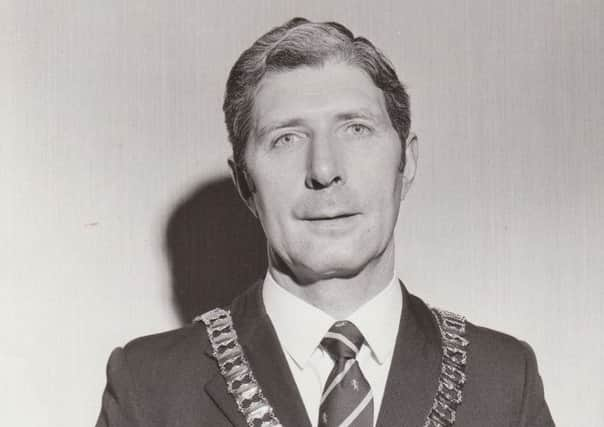Obituary: Leslie Turberville, Fleet Air Arm veteran and police officer


Leslie Turberville’s multi-faceted abilities took him from the mundanity of junior clerk allocating coal rations to crewing a bi-plane torpedo bomber, rising through the ranks of the police and managing an Olympic swimming team.
En route he excelled on the sports field and in the pool, was mentioned in dispatches for gallantry in the face of the enemy and was instrumental in establishing a police sub aqua team – impressive achievements for a boy who left school at 16 in an uncertain era that would soon see Britain plunged into crisis.
Advertisement
Hide AdAdvertisement
Hide AdThe son of a police officer, he was brought up and educated in Birmingham where his athletic abilities became evident – he was a champion swimmer and captained the school team, was rugby vice-captain and won colours for both sports, plus cricket.
His first job was in the balancing department of the Beacon Insurance Company before he transferred to local government, working in the City of Birmingham’s treasurer’s department as a junior clerk in the rates office. On the outbreak of the Second World War he was assigned to duties in the local Fuel Overseer’s office, allocating coal rations to merchants and the public.
As a teenager he also did his bit for the war effort as a member of the Air Training Corps, serving on fire-watching duties in the city centre and in his home area. In 1941 – not yet 20 – he was accepted for flying duties with the Fleet Air Arm (FAA) and was called up the following April.
After initial training at the Royal Naval Air Station HMS Daedalus at Lee on the Solent and HMS St Vincent at Gosport, he sailed on the troopship RMS Queen Mary to America for pilot training at Gross Ile, Detroit. He then spent several weeks at Trenton and Halifax in Canada and by the beginning of 1943 was on a FAA observer’s course. Further training followed in the UK before he left Scotland on HMS Aquitania to return to America. He then headed on to Trinidad to start flying training at Piarco Air Base. He spent six months there and enjoyed plenty of sport, including soccer and rugby, and weekends at Balandra Beach, Tobago.
After completing his course – he came out top – in January 1944, he was commissioned as a sub-lieutenant with the Royal Naval Volunteer Reserve. Following a course in radar, flying Avro Anson and Fairey Swordfish aircraft – the latter a bi-plane known as the “Stringbag” because of its criss-cross of bracing wires reminiscent of a bygone era – he joined 819 Squadron at Manston in Kent.
He would spend the next nine months with the squadron, flying night patrols in the Swordfish over the English Channel and later, around D-Day, on daylight smoke-laying missions to cover vessels involved in the invasion.
The crew was based in Kent, Norfolk and then at St Croix, Maldeghem and Knocke-le-Zoute in Belgium. They proved themselves a great success, with Turberville being mentioned in dispatches and his pilot winning the Distinguished Flying Cross – though, typically of those of their generation, Turberville was reluctant to furnish details of their heroics and preferred to discuss his sporting achievements above his war service.
The squadron was subsequently disbanded and in March 1945 he joined 836 Squadron, based at Maydown in Northern Ireland. Their mission was to fly from flat-topped Merchant Navy ships to protect the Atlantic convoys from German submarines prowling the ocean.
Advertisement
Hide AdAdvertisement
Hide AdHis unit of three Swordfish was assigned to the tanker MV Alexia and was required to fly only one trip before the war in Europe ended in May that year.
A few weeks later he joined 767 Squadron at RNAS Easthaven to help with deck landing training. There was more opportunity for sport than for flying and as the war was drawing to a close he met his future wife, Ruby, a Leading Wren from Aberdeen, through playing cricket.
He was demobbed in May 1946, by which time he and Ruby were engaged and, as she was keen to return to North-east Scotland, he applied to join Aberdeen City Police.
He started with the force exactly a year after VE Day, on 8 May, 1946, as PC50 and spent his entire police career in its ranks. During the 1950s he worked in the control room, general inquiries and CID, and was promoted to sergeant in 1955, becoming an inspector in 1964 and a chief inspector the following year. During this time he was also instrumental in setting up the Aberdeen City Police sub-aqua team.
Turberville spent a total of 36 years with the force. It became Grampian Police in 1975, by which time he was a chief superintendent in charge of headquarters administration. When he retired in 1982 he was D Division commander, a post he had held for five years.
Alongside his professional life, he maintained a keen interest in swimming. For more than 30 years he regularly swam at Aberdeen’s art deco Bon Accord Baths and, for most of that time, was secretary of its swimming club.
He served as president of the Scottish Amateur Swimming Association in 1974 and, in 1984, chaired the British Swimming Federation, the governing body of the home nations’ associations, attending the Los Angeles Olympic Games of that year as manager of the Great Britain Swimming Team.
Widowed 13 years ago on the death of Ruby, a former women’s editor of the Aberdeen Evening Express, he is survived by his three sons, Eric, Philip and Michael, five grandchildren and six great-grandchildren.